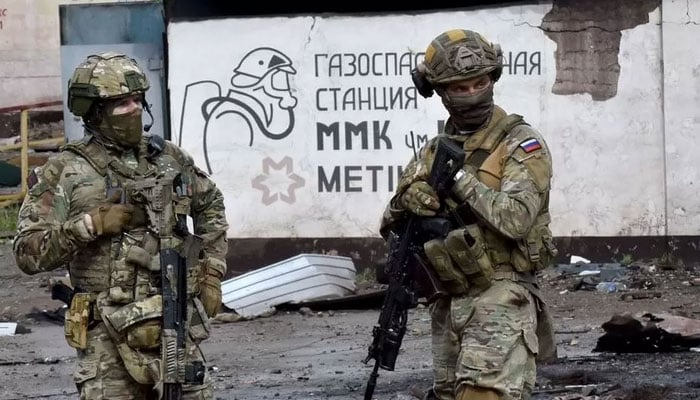
Soutik Biswas
A month after taking office in the summer of 2014, Prime Minister Narendra Modi said India’s “democracy will not sustain if we can’t guarantee freedom of speech and expression”.
Many believe, India’s democracy looks diminished, by what they say are persistent attacks on the freedom of the press.
Last year India dropped two places and was ranked 142 on the 180-country World Press Freedom Index, compiled annually by Reporters Without Borders. It’s an unflattering commentary on a country that often prides itself on a vibrant and competitive media.
The latest crackdown has happened after violence during a recent rally by farmers to protest at a raft of agriculture reform laws. One protester was killed and more than 500 policemen injured in the clashes.
Now police have filed criminal charges – including sedition and making statements inimical to national integration – against eight journalists who covered the protests in Delhi.
The cause of the protester’s death – at the rally on 26 January – remains disputed. While police say he died when the tractor he was driving overturned, his family alleges that he was shot. His family’s account, which has been published by various newspapers and magazines, appears to have become the basis of these charges.
Some of the journalists were involved in reporting or publishing the story, and others only shared it on social media.
Six of them – and a prominent opposition Congress party MP who is accused of “misreporting” facts surrounding the death – are facing cases in four BJP-ruled states.
“Is it a crime for media to report statements of relatives of a dead person if they question a post-mortem or police version of the cause of death?” Siddharth Varadarajan, editor-in-chief of The Wire and one of the journalists charged by police, said.
A man reads a newspaper featuring front-page news on US President Joe Biden and Vice President Kamala Harris at her ancestral village of Thulasendrapuram in the southern Indian state of Tamil Nadu on January 21, 2021
Rights groups and many fellow journalists are outraged. “The Indian authorities’ response to protests has focused on discrediting peaceful protesters, harassing critics of the government, and prosecuting those reporting on the events,” said Meenakshi Ganguly, South Asia director at Human Rights Watch. The police cases, the Editors Guild of India said, were “an attempt to intimidate, harass, browbeat, and stifle the media”.
A case in point, many say, is Caravan, an investigative news magazine which has often been in the crosshairs of Mr Modi’s government.
Ten sedition cases have been brought against three of its senior-most editorial staff – the publisher, editor and executive editor – in five states for a story and tweets relating to the death of the protester. One of the magazine’s freelance reporters was arrested from a protest site for “obstruction”, and released on bail after two days. The magazine’s Twitter account was suspended for a few hours in response to a legal notice by the government, citing objections based on public order.
Last year, four of Caravan’s journalists were attacked in two separate incidents while reporting on the aftermath of religious riots and a protest concerning the alleged rape and murder of a teenager in Delhi. “There is a narrative here which is very dangerous. We live in polarised times where critics of the government are branded as anti-nationals. It is the job of journalists to ask questions to people in power,” Vinod Jose, executive editor of Caravan, told me.
Critics say a number of journalists seen as sympathetic to the government have consistently got away with broadcasting and publishing inflammatory material, often targeted at minorities.
Also, they wonder why the colonial era sedition law is being so widely used to crack down on dissent. An overwhelming majority of sedition cases filed against 405 Indians for criticising politicians and governments over the last decade were registered after 2014, when Mr Modi took power, according to data compiled by the website article14. Opposition politicians, students, journalists, authors and academicians have borne the brunt of the repressive law.
In a polarised environment, journalists are more divided than ever before. Much of the mainstream media, including a clutch of partisan news networks, is seen to be uncritical of Mr Modi’s government. “India, the world’s most populous democracy, is also sending signals that holding the government accountable is not part of the press’s responsibility,” a report by Freedom House said.
Many believe India is becoming unsafe for journalists. Sixty-seven journalists were arrested and nearly 200 physically attacked in 2020, according to a study by Geeta Seshu for the Free Speech Collective. A journalist, who was on his way to cover the gang rape of a girl in Uttar Pradesh state, has been in jail for five months.
Journalists – especially women critical of the government – face fierce online trolling and threats. Delhi-based freelance journalist Neha Dixit says she has been “stalked, openly threatened with rape and murder, viciously trolled”, and an attempt made to break into her apartment. This week, the police arrested a law student for allegedly sending death and rape threats to Rohini Singh, another freelance journalist.
Courtesy: BBC


